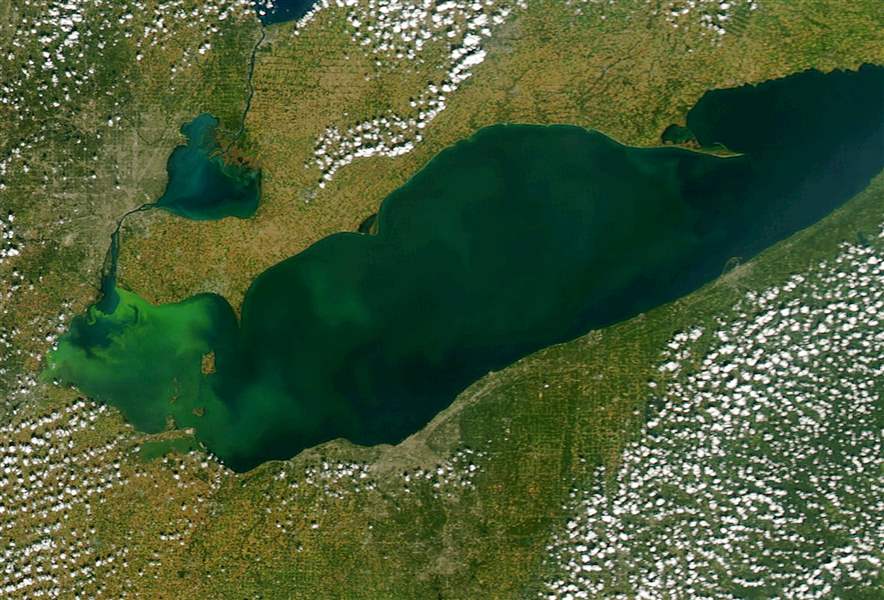
Biologists eye two algae toxins in Sandusky Bay
3/16/2018
Satellite photo of Lake Erie algae taken Sept. 26, 2017. NOAA CoastWatch image - Great Lakes Region.
To most people, Cedar Point is all about the thrill of roller coasters.
But to George Bullerjahn, it’s about the peninsula where the world-renowned amusement park sits. The area is roughly where Lake Erie’s two most evil forms of algae — microcystis and its lesser-known counterpart, planktothrix — usually meet.
Although biologically different, both form the toxin known as microcystin — the poison behind Toledo’s 2014 water crisis and the one that forced an unplanned shutdown of the Carroll Township water-treatment plant in Ottawa County in 2013, the first event of its kind in Ohio history.
Mr. Bullerjahn is a Bowling Green State University biology professor who specializes in the ecology of Lake Erie’s Sandusky Bay and the bay’s longstanding struggles with planktothrix.
RELATED CONTENT: Not all algae are the same
Planktothrix is the same algae that overwhelmed Ohio’s Grand Lake St. Marys with a record bloom in 2010. It has been known to alternate with microcystis as the nuisance species in the Maumee River as far away as Defiance.
For reasons unknown, planktothrix has for years been the dominant algal species in Lake Erie’s Sandusky Bay, while microcystis has been the dominant form of algae in the vast, open water of nearly all other parts of western Lake Erie since at least 1995.
During a talk Thursday night at the University of Toledo’s Lake Erie Center near Maumee Bay State Park, Mr. Bullerjahn explained that the millions of people who ride Cedar Point’s roller coasters — through no fault of the park — are actually in a position geographically to have a front-row seat for observing the standoff between those two types of algae.
While the distinction between planktothrix and microcystis means little to most people, scientists are curious why planktothrix stays put in Sandusky Bay while microcystis maintains control of the open water.
“Fundamentally, it's an interesting biological question,” Mr. Bullerjahn said.
The state of Ohio is engaging in a research project called the Sandusky Bay Initiative, whereby Sandusky-area dredged material will be used to build a series of artificial islands and to enhance wetlands along the Sandusky Bay shoreline to help reduce algae-forming nutrients coming down the Sandusky River.
But Mr. Bullerjahn fears the battle for Sandusky Bay will be a tough one, given what he’s learned about the resiliency of planktothrix.
“My predictions for the bay aren't particularly positive,” he said.
BGSU now has eight sites where it samples for planktothrix regularly in Sandusky Bay, Mr. Bullerjahn said.
Tom Bridgeman, a UT algae researcher who attended the presentation, said he’s certain the late-summer algae that formed near downtown Toledo’s Promenade Park in 2017 was a separate bloom of microcystis that grew within the river.
“I really don’t think it came in from the lake,” Mr. Bridgeman said.
Contact Tom Henry at thenry@theblade.com, 419-724-6079, or via Twitter @ecowriterohio.